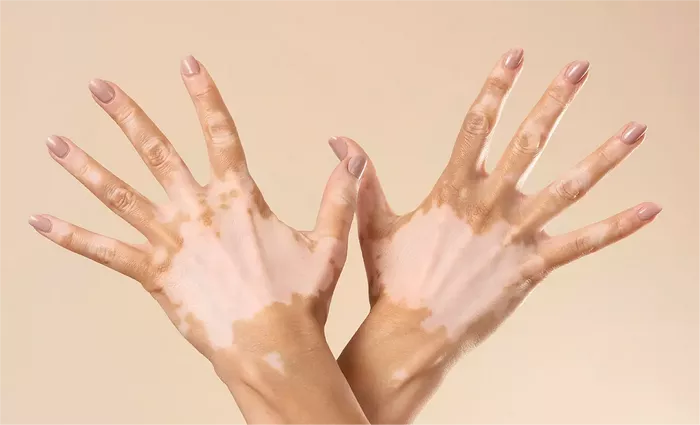Vitiligo is a chronic skin condition characterized by the loss of pigmentation, resulting in white patches on the skin. While it is not a life-threatening condition, it can significantly impact an individual’s quality of life. Managing vitiligo involves a multifaceted approach, including medical treatments, lifestyle modifications, and emotional support. In this article, we will delve into various strategies to stop vitiligo from spreading and improve overall well-being.
Treatment Options:
1. Medical Treatments:
Medical treatments aim to halt the progression of vitiligo and restore pigmentation to affected areas. Common medical interventions include:
Topical Corticosteroids: These anti-inflammatory medications are applied directly to the affected skin to reduce inflammation and promote repigmentation.
Calcineurin Inhibitors: Tacrolimus and pimecrolimus are immunomodulatory drugs that can be applied topically to inhibit the immune response responsible for attacking melanocytes, the pigment-producing cells.
Light Therapy (Phototherapy): Phototherapy involves exposing the skin to ultraviolet A (UVA) or UVB light to stimulate pigment production in the affected areas. This treatment can be administered using a narrowband UVB lamp or in combination with oral or topical psoralen (PUVA therapy).
Surgical Options: In cases where other treatments have failed, surgical interventions such as skin grafting, blister grafting, or melanocyte transplantation may be considered to repopulate depigmented areas with melanocytes.
2. Complementary & Alternative Therapies:
While not proven as standalone treatments, some individuals find relief from vitiligo symptoms through complementary and alternative therapies, including:
Vitamin and Mineral Supplementation: Some studies suggest that vitamins such as vitamin D, vitamin B12, and minerals like copper and zinc may play a role in melanocyte function and pigmentation.
Herbal Remedies: Certain herbs like Ginkgo biloba, khellin, and Polypodium leucotomos extract have been studied for their potential to modulate the immune system and improve pigmentation in vitiligo.
Dietary Changes: Although more research is needed, adopting a diet rich in antioxidants, vitamins, and minerals may support overall skin health and potentially aid in vitiligo management.
3. Emerging Therapies:
Researchers are continually exploring new treatment modalities for vitiligo. Promising avenues of research include:
JAK Inhibitors: Drugs targeting Janus kinase (JAK) enzymes have shown promise in halting autoimmune attacks on melanocytes and promoting repigmentation in clinical trials.
Stem Cell Therapy: Stem cell-based treatments hold potential for repopulating depigmented areas with functional melanocytes, offering a more permanent solution to vitiligo.
Biologics: Biologic medications that target specific immune pathways involved in vitiligo pathogenesis are being investigated as potential therapeutic options.
Understanding Vitiligo:
1. Causes and Risk Factors:
Vitiligo is primarily an autoimmune disorder, wherein the body’s immune system mistakenly attacks and destroys melanocytes. While the exact cause remains unknown, factors such as genetic predisposition, environmental triggers, and oxidative stress may contribute to its development.
2. Types of Vitiligo:
There are two main types of vitiligo:
Non-segmental Vitiligo: This form, also known as bilateral or generalized vitiligo, typically presents with symmetrical depigmentation on both sides of the body and is more common. It often progresses over time, affecting larger areas of the skin.
Segmental Vitiligo: Segmental vitiligo tends to occur at a younger age and is characterized by unilateral, asymmetrical patches that do not spread beyond a specific segment of the body. It may remain stable or spontaneously resolve without treatment.
3. Psychological Impact:
Living with vitiligo can have significant psychological and emotional ramifications. Individuals may experience feelings of embarrassment, low self-esteem, and social stigma due to their visible skin changes. Addressing these psychological aspects is essential for comprehensive vitiligo management.
Lifestyle and Home Remedies:
1. Sun Protection:
Protecting the skin from excessive sun exposure is crucial for individuals with vitiligo, as sunburns can exacerbate existing depigmented areas and increase the risk of skin cancer. Sunscreen with a high SPF, protective clothing, and seeking shade during peak sunlight hours are essential sun protection measures.
2. Camouflage Techniques:
Cosmetic camouflage products, such as specialized makeup and self-tanning lotions, can help individuals with vitiligo conceal depigmented patches and achieve a more uniform skin tone. Consulting with a dermatologist or makeup artist experienced in camouflage techniques can provide personalized recommendations.
3. Stress Management:
Stress is often cited as a potential trigger for vitiligo flare-ups and progression. Engaging in stress-reduction techniques, such as yoga, meditation, deep breathing exercises, or mindfulness practices, can help individuals manage stress levels and improve overall well-being.
4. Diet and Nutrition:
While there is no specific “vitiligo diet,” adopting a balanced diet rich in fruits, vegetables, whole grains, and lean proteins may support skin health and immune function. Foods with anti-inflammatory properties, such as omega-3 fatty acids, turmeric, and green tea, may also be beneficial.
Conclusion
In conclusion, while there is currently no cure for vitiligo, there are various strategies available to manage the condition effectively and improve quality of life. By combining medical treatments with lifestyle modifications, emotional support, and community engagement, individuals with vitiligo can empower themselves to embrace their unique beauty and live life to the fullest.
























